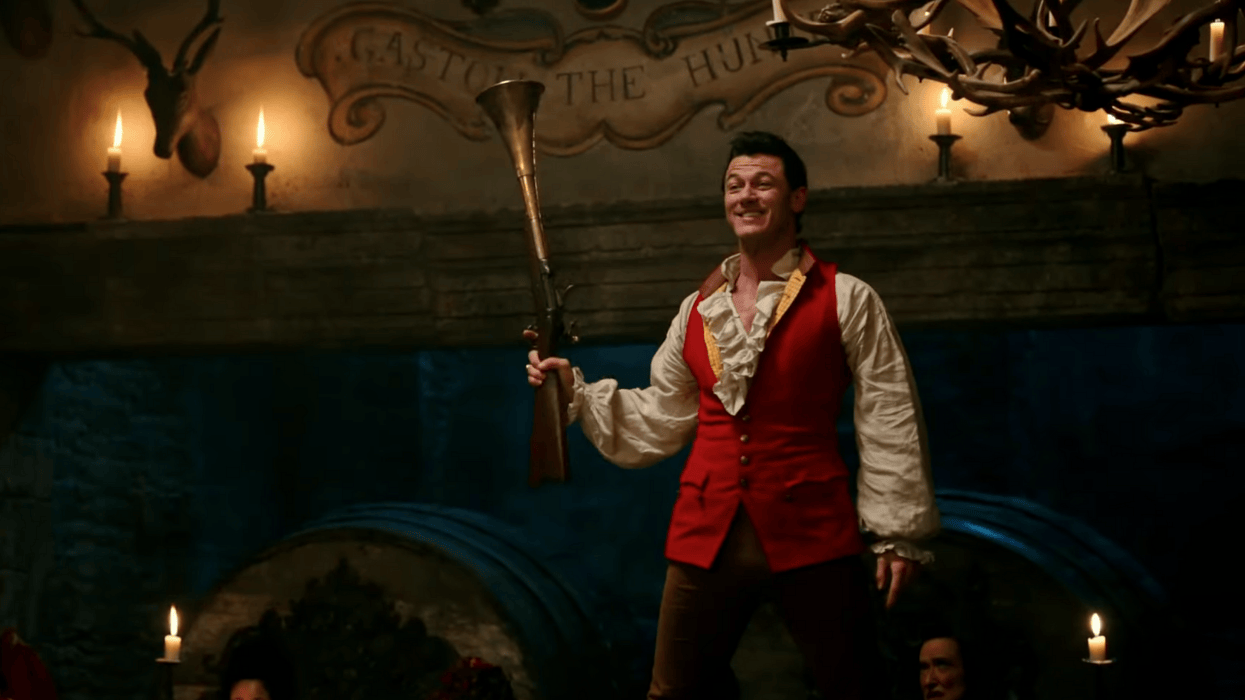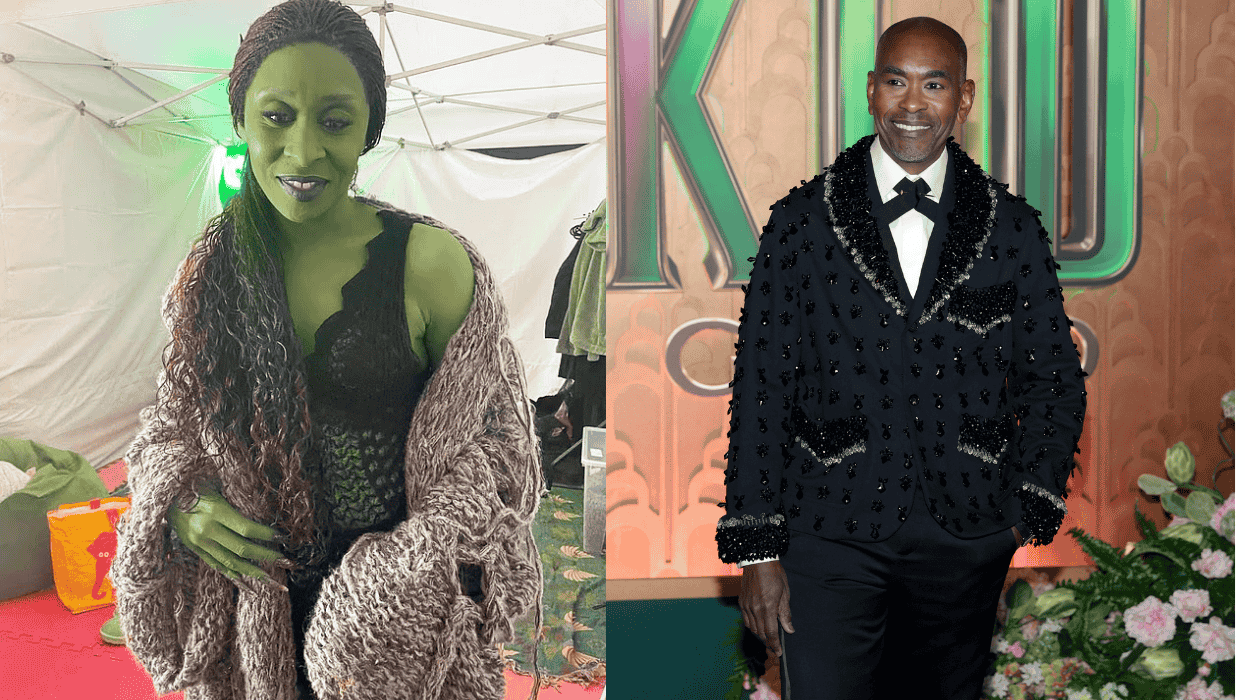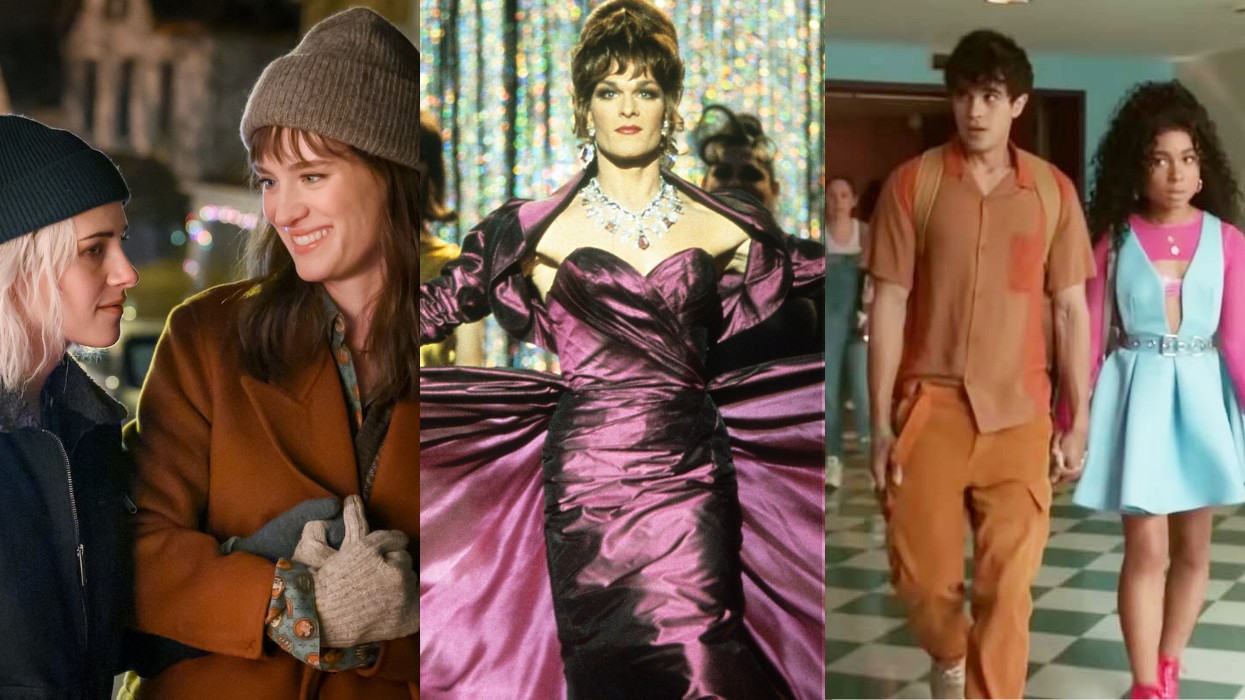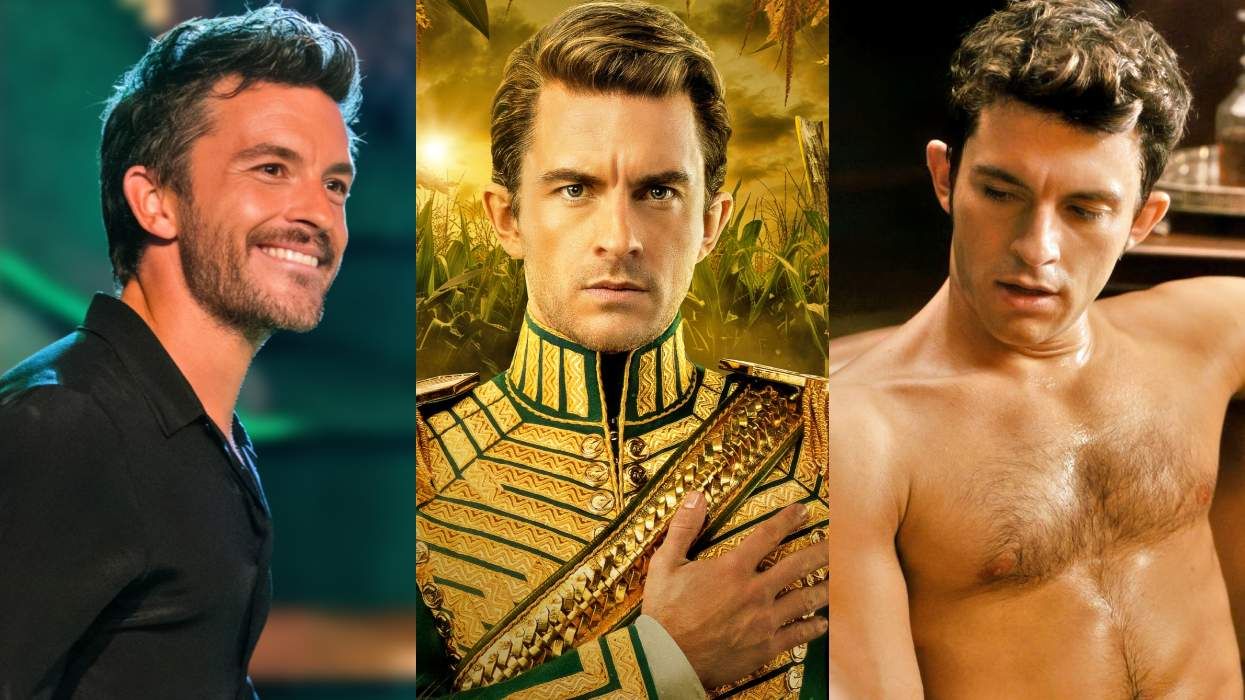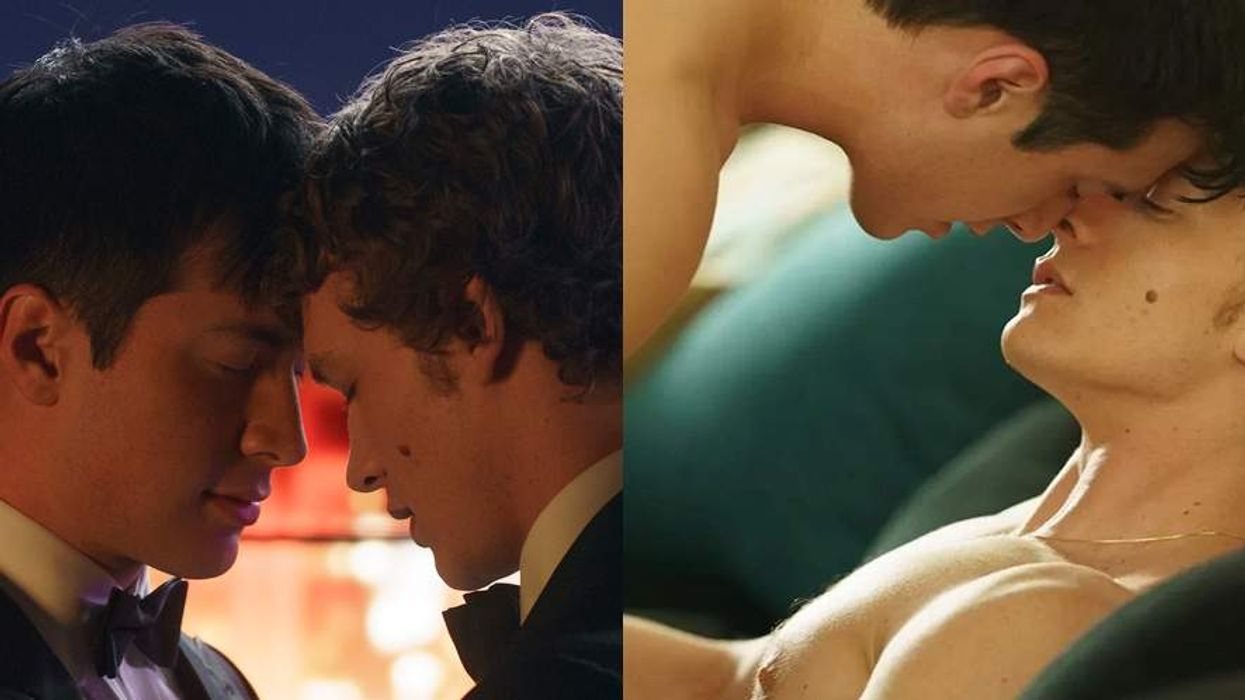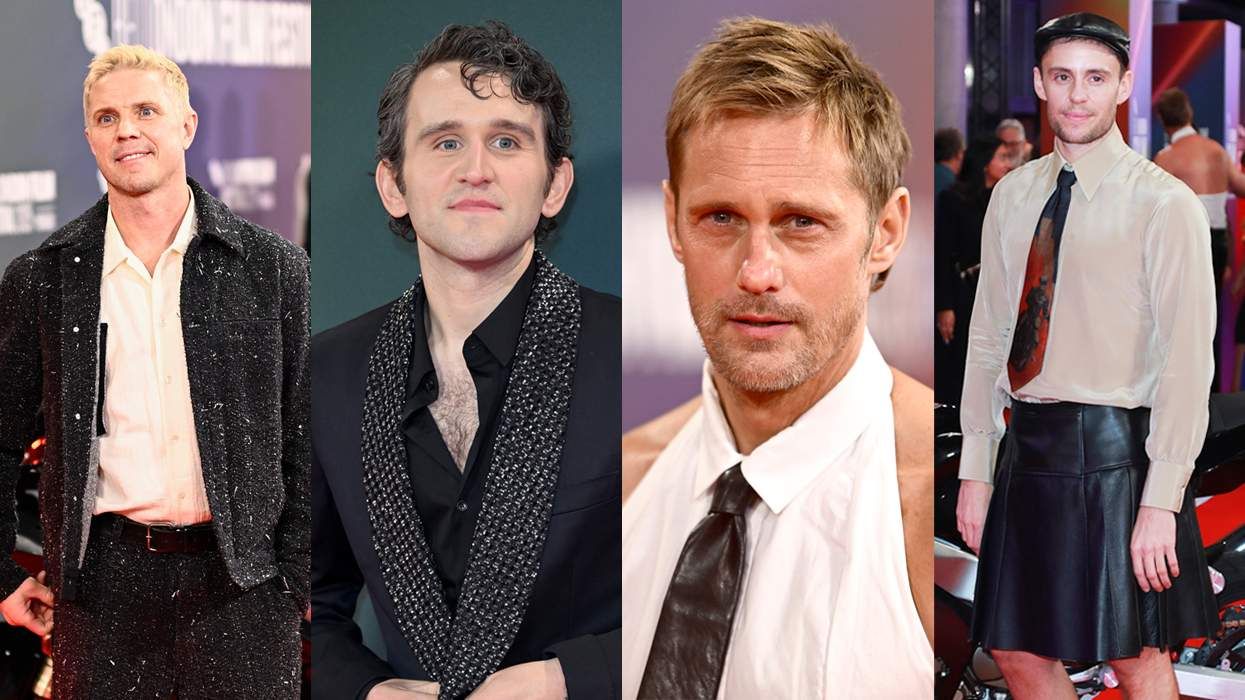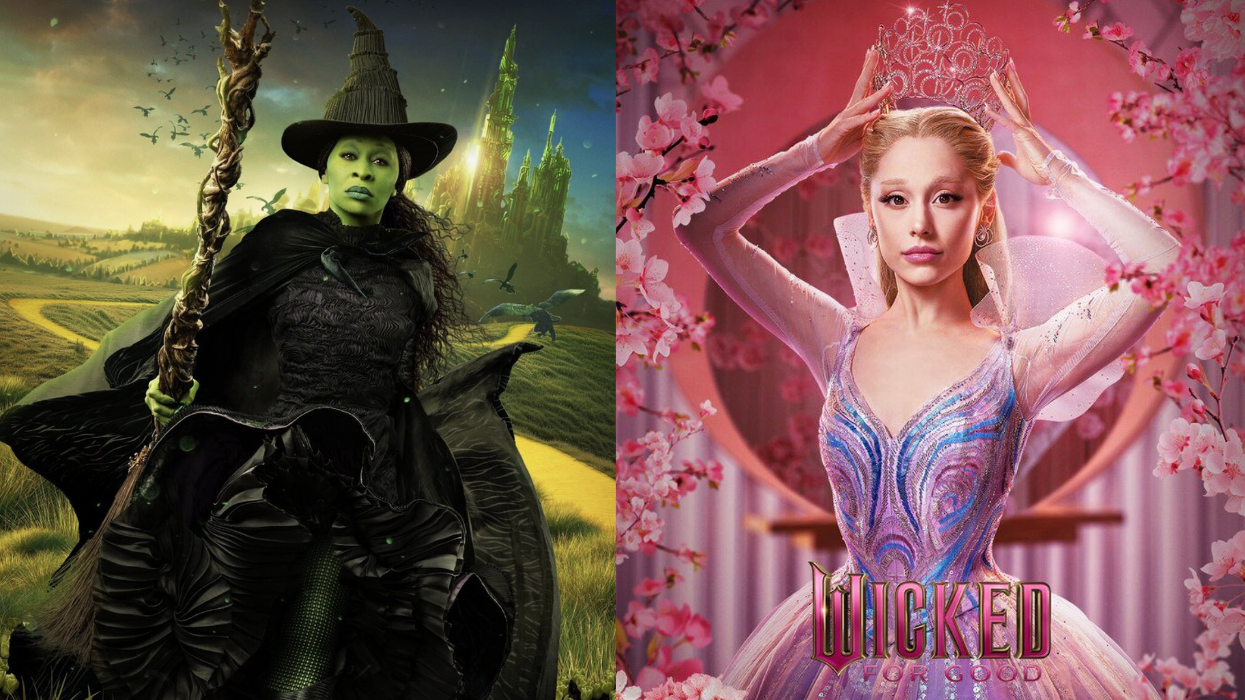If the hairs on the back of a man's neck make the hairs on the back of your neck stand up, along with other erogenous parts, then 300: Rise of an Empire is a movie for you. Produced by Zack Snyder, who directed the original 300 in 2006, Rise of an Empire continues Snyder's revolution in movie eroticism--especially masculine eroticism. (Remember how muscle-bound Henry Cavill entered Snyder's Man of Steel by bursting through a wall of flames?) Snyder brings sexuality to the graphic novel spectacular.
The instinctive appeal of beefcake once made gladiator movies a gay teenager's passion. Jokes about 300 merely disguised that truth. Snyder's fascination with the vectors of action, where the whoosh of human movement and intense stress are visualized, gets rid of sniggly shame.
Adapting Frank Miller's 300 graphic novel for its daring sexual undercurrent, Snyder depicts the eroticism of force--the cinematic essence of violence and virility as Tarzan and Hercules fans always dreamed about. 300's famous CGI six-packs and the bulging calves of Spartan warriors were a palpable realization of what viewers appreciate when watching big screen heroics and masculine authority. In the context of ancient Greek history (already filmed in 1962's The 300 Spartans) Snyder aroused new excitement. He not only elevated grade-B, kids-stuff routines but dramatized the basis of its sexual allure. Innumerable stroke book fantasies were ignited by Gerard Butler's enraged/engorged bearded King Leonides ("This is Sparta!") as he fought to the death at the Gates of Thermopylae. It epitomized honor--and hotness.
For Rise of an Empire, Snyder enlisted commercials director Noam Murro who has shown a gift for the erotic fraternizing first commoditized by Bruce Weber's 1980s Calvin Klein ads--a public short-hand to the mental handjob. Murro successfully applies that taste to the classical storytelling mode of Greek mythology, heightening it like emotionally extravagant opera.
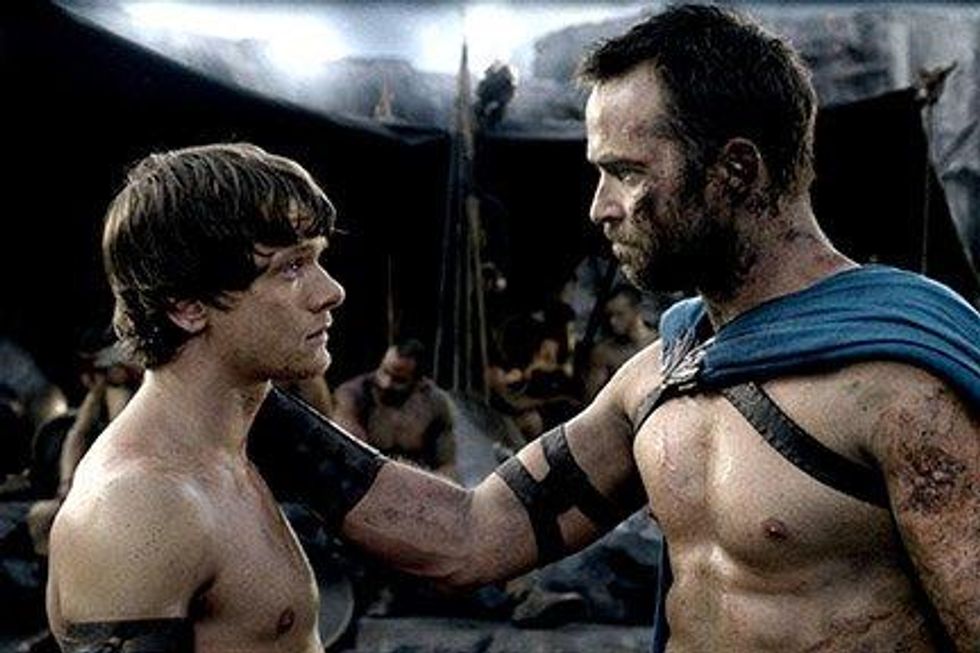
Stapleton's blond facial scruff matches the sensual detail of his musculature. The spiky and smooth neck hairs are as textured as the different sets of aureole and bulgy nipples that--through 3D imagery--seem touchable. The film's masculine ethos is challenged by Themistocles' arch enemy Artesmia, a traitor longing to see her Greek homeland vanquished. Artemisia commands Persia's armada ("I'm not here as a witness!"), contesting Themistocles's sense of democratic fealty with her own bloodlust.
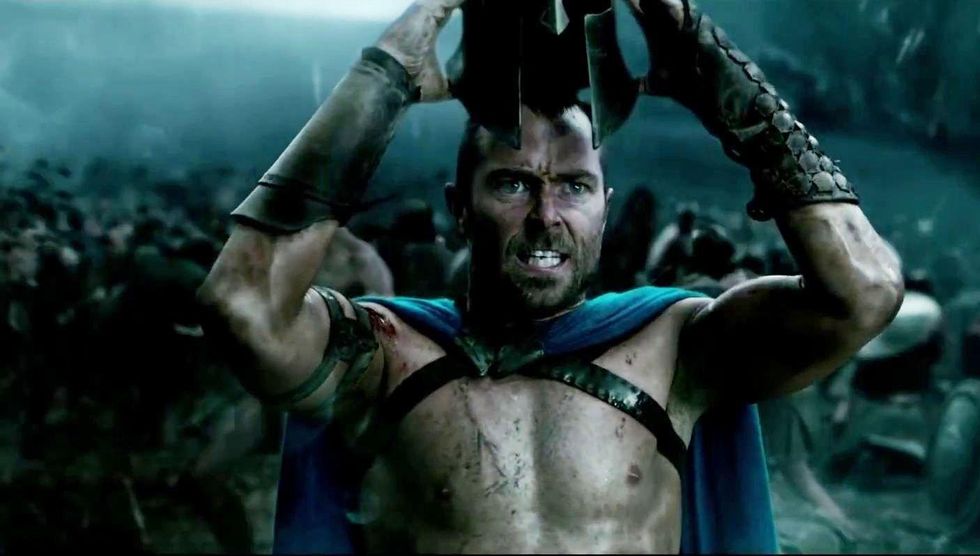
Still, Rise of an Empire is never camp. Artemisia is fierce enough to inspire several contestants on RuPaul's Drag Race, but her part in a pansexual pageant completes the realistic, erotic dimension that avoids comic book silliness.
The primal pleasure in seeing gorgeous men enflamed by their emotions and ennobled by history goes beyond boyhood--as in Murro's overhead frieze memorializing the Spartans or a high-seas night battle silhouetted by an enormous moon. From the details of fine neck hair to cinders floating in the air, Rise of an Empire's images carry the shock of tragedy, matching the great war accounts in literature and painting. Most adventure movies offer fleeting thrills, Snyder's 300 series combines an emotional surge with a chubby that keeps you ready for more.









